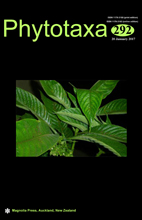Abstract
We apply a multidisciplinary approach to settle the dispute over the generic affiliation of the Himalayan species Senecio kumaonensis (based on Cacalia penninervis). Some floral micromorphological characters of this species, including shape of anther bases, configuration of anther collars, and anther endothecial tissue cell wall thickenings, are confirmed to perfectly match those of Senecio and this has obviously resulted in the placement of the species within that genus. Chromosome counts indicate S. kumaonensis has 2n = 40, a number common to Senecio and Synotis but not occurring in Parasenecio (the correct generic name for the Asian species previously referred to Cacalia), which has 2n = 52, 58, and 60. The presence of six subterminal-centromeric (st) chromosomes in the karyotype of S. kumaonensis, however, lends strong support to the close relationship of this species to Synotis. Our phylogenetic analyses based on ITS/ ETS sequences also place S. kumaonensis in Synotis. In this species the anther tail feature, once deemed to be diagnostic for Synotis (anther bases in Synotis with sterile, tailed auricles vs. those in Senecio without such auricles, obtuse to sagittate), has an exception as evidenced from phylogeny. We therefore transfer S. kumaonensis to Synotis and, as the epithet “penninervis” has hitherto never been used in the genus, we propose the new combination Syn. penninervis for this species.

